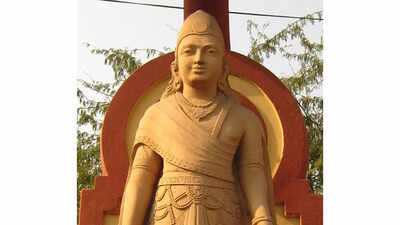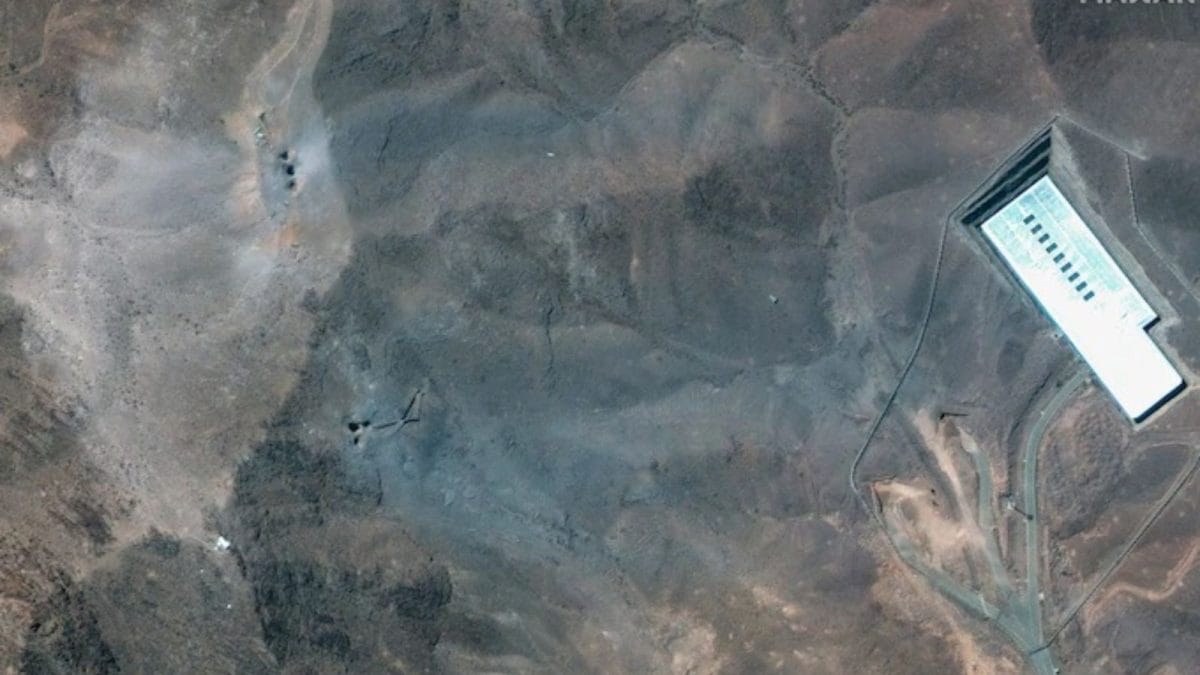ARTICLE AD BOX

Long before Ashoka the Great left his indelible mark on stone pillars and the collective conscience of the Indian subcontinent, another towering figure laid the foundation for one of India’s most powerful and enduring empires.
Chandragupta Maurya, remembered as India’s first emperor, rose from modest beginnings to overthrow formidable rulers, unify a fragmented land, and establish a dynasty that would dominate South Asia for more than a century. His legacy lives on, not only in the pages of history books but in India's national emblem, currency, and collective identity.What makes Chandragupta’s story extraordinary is not just his military might, but his strategic brilliance, shrewd political alliances, and ultimately, his spiritual transformation.
In a remarkable arc, he would renounce the power he once fought to attain and embrace a life of peaceful asceticism.
How Chandragupta Maurya rose from humble roots to build an empire
Chandragupta Maurya’s early life remains partly obscured by legend, but both Indian and Greek sources suggest he came from a modest or even humble background. His fortunes changed when he crossed paths with Chanakya (also known as Kautilya), a brilliant scholar and master strategist from Takshashila.
Chanakya became his mentor and political architect, and together, they plotted the downfall of the Nanda empire.In the mid-4th century BCE, northern India was a mosaic of kingdoms and republics, with the Nanda dynasty ruling Magadha (modern-day Bihar) as a dominant, yet unpopular, force.The Nanda dynasty ruled with iron and opulence. Their coffers overflowed with gold, and their army was unmatched in size and strength.
Yet beneath the surface of this powerful reign simmered discontent. The common people, burdened by harsh taxation, and the nobility, stripped of influence, had grown weary of Dhana Nanda's arrogance and cruelty.Among those humiliated by the king was a brilliant scholar from Takshashila, Chanakya, a man whose pride matched his intellect. Mocked and dismissed by Dhana Nanda at court, Chanakya walked out with a silent vow burning in his heart: he would not rest until the Nanda throne was reduced to ashes.In his search for a worthy vessel for this revenge, Chanakya found Chandragupta, a boy of noble spirit and military potential. Though born into obscurity, Chandragupta carried within him the makings of a king. Chanakya took him in, trained him, and together they formed a partnership that would change the course of Indian history.But toppling a giant required more than dreams and anger. It demanded strategy, patience, and ruthlessness.At first, they tried to strike directly, but the Nanda forces were too strong. Defeat taught them caution. So, they changed tactics. Using guerrilla warfare, they struck at supply lines, ambushed smaller units, and sowed chaos where order once reigned. While Chandragupta led these daring missions, Chanakya wove a web of espionage, gathering secrets and turning informants within the Nanda court. They reached out to those long ignored — disillusioned kings, tribal chieftains, and restless generals.
Promises were made, alliances forged, and rebellions quietly stoked. One by one, the outer territories slipped from Nanda control and came under Chandragupta’s banner.The noose tightened around Pataliputra, the jewel of the Nanda Empire.By 321 BCE, the moment had come. With a formidable army and a network of allies surrounding the capital, Chandragupta laid siege. What followed was a prolonged and punishing battle, a test of endurance, willpower, and belief.
In the end, Dhana Nanda, the once-mighty ruler, was forced to surrender.The Nanda dynasty had fallen.From its ruins rose the Mauryan Empire, the first great unification of the Indian subcontinent. But this was no ordinary conquest. It was the result of years of planning, diplomacy, strategy, and relentless ambition. At the heart of it were two men, the master tactician and the fearless warrior, who dared to believe they could bring down a dynasty and build an empire in its place.
The Unstoppable Rise: Chandragupta’s expansion of empire
After Alexander withdrew from the northwestern regions, he left behind kshatraps, local governors tasked with maintaining Macedonian control, over territories such as Gandhara and Punjab. These satraps governed the lands between the Indus River and the Hindu Kush mountains, but their hold became tenuous following Alexander’s departure.Around 305 BCE, Seleucus I Nicator, founder of the Seleucid Empire and a former general of Alexander the Great, attempted to regain control over northwestern Indian territories such as Gandhara, Arachosia, and the Indus Valley.
These regions had been left under Macedonian satraps after Alexander’s withdrawal, but by then had come under the growing influence of Chandragupta Maurya. In the ensuing conflict, Chandragupta either defeated Seleucus or forced him into a position of compromise.
According to classical sources like Strabo and Plutarch, the two leaders concluded a treaty around 303 BCE, under which Seleucus ceded large swaths of territory—covering present-day Afghanistan, Pakistan, and parts of northwest India—to the Mauryan Empire.In return, Chandragupta gifted Seleucus 500 war elephants, which later proved crucial in Seleucus’s campaigns in the west, especially at the Battle of Ipsus. The treaty also included a dynastic marriage alliance, possibly involving a Greek or Macedonian princess, signifying a broader political and cultural rapprochement. This agreement not only solidified Mauryan control over the northwest but also marked the beginning of diplomatic relations between the two great powers, exemplified by the Greek ambassador Megasthenes’ presence at Chandragupta’s court in Pataliputra.
The empire he built and the legacy that followed
Under Chandragupta’s reign, the Mauryan Empire flourished both economically and administratively. The fertile plains of the Ganga, Gandak, and Son rivers supported productive agriculture, which was bolstered by innovations in irrigation and land reform. Rich deposits of copper and iron contributed to thriving metalwork, essential for tools, weapons, and trade.Chandragupta implemented a centralised and efficient bureaucracy, inspired by Chanakya’s Arthashastra.
The empire was divided into provinces, each overseen by royal governors and supported by a complex network of tax collectors, military commanders, and civil servants. Internal security was reinforced by a well-organised spy system, ensuring order and accountability.The Mauryan Empire became a critical node in the ancient world’s trade networks. Goods like spices, textiles, gemstones, and ivory moved across the empire and beyond, reaching Central Asia, the Middle East, and even the Mediterranean.
These exchanges also brought new ideas, philosophies, and cultural influences, helping shape India’s cosmopolitan character.Chandragupta was succeeded by his son, Bindusara, who further consolidated the empire. His grandson, Ashoka, would later expand it to its greatest territorial extent and transform its character through the adoption of Buddhism and principles of moral governance. Although Ashoka’s reign is more widely remembered, it was Chandragupta who laid the foundational structure of imperial India.The symbols of Mauryan rule continue to echo today. The Lion Capital of Ashoka, erected at Sarnath, was adopted as the national emblem of India after independence. The motto "Satyameva Jayate" (Truth Alone Triumphs), inscribed below, reflects the values of justice and ethical governance that have come to define the Mauryan legacy.
A king’s final journey: From power to renunciation
Despite his immense accomplishments and absolute power, Chandragupta’s life took a deeply spiritual turn in his later years.
According to Jain tradition, he came under the influence of Jain monks and teachings, particularly those of Acharya Bhadrabahu. Moved by the principles of non-violence and renunciation, he chose to step away from politics and worldly affairs.Chandragupta abdicated the throne in favour of his son and journeyed south to Shravanabelagola in present-day Karnataka. There, he lived as a Jain ascetic and eventually undertook Sallekhana, a voluntary fast to death practised in Jainism as a means of spiritual purification and liberation from the cycle of rebirth.This final act of renunciation adds a profound layer to Chandragupta’s legacy. He was not just a military genius or an empire builder. He was a man of depth and vision, whose journey from power to peace exemplifies a rare synthesis of ambition and wisdom.Chandragupta Maurya’s story is a remarkable journey from humble origins to imperial power, marked by strategic brilliance, political savvy, and spiritual awakening. His overthrow of the Nanda dynasty was a defining moment that reshaped the Indian subcontinent and laid the groundwork for one of history’s great empires. His legacy continues to inspire, reminding us of the enduring power of vision, courage, and transformation.



.png)
.png)
.png)
















 5 hours ago
4
5 hours ago
4









 English (US) ·
English (US) ·